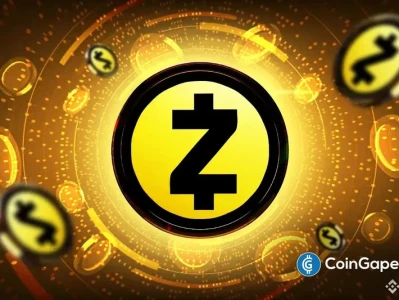The Great Reinvention: How Horizen Traded Its Kingdom for a Key to the City
For years, we’ve been told a story about privacy in the digital world. It was a story of fortresses and shadows, of isolated networks built to keep the outside world out. Projects like Monero, Zcash, and the original Horizen (then called ZenCash) were the pioneers of this vision—digital citadels where your data was your own, fiercely guarded by complex cryptography. They were magnificent, necessary experiments. But they were also islands, disconnected from the bustling, chaotic, and innovative continent of the broader crypto ecosystem. And in a world that increasingly demands connection, islands face a difficult choice: remain pure and isolated, or build a bridge to the mainland.
In July of 2025, Horizen didn’t just build a bridge. It packed up its entire kingdom, piece by piece, and moved it right into the heart of the capital city. Its migration from a sovereign Layer 1 blockchain to a specialized Layer 3 “appchain” on Base, Ethereum’s fastest-growing suburb, wasn’t a surrender. It was a masterstroke. It’s the kind of move that signals a profound shift in thinking, a pivot from privacy as an ideology to privacy as a utility. And when I first wrapped my head around the implications, I honestly just sat back in my chair, speechless. This is the kind of breakthrough that reminds me why I got into this field in the first place.
The old model was breaking. We saw it happen. As regulators circled and exchanges grew wary, the fortress walls that were meant to protect these privacy coins began to feel more like prison walls. The very thing that made them special also made them targets. Horizen, which had soared to an all-time high of over $165 in 2021, found itself trading below $10 just a few years later. The market wasn’t just in a downturn; it was sending a message. Isolation, it seemed, was no longer a viable long-term strategy.
From Fortress to Feature: Privacy in the Age of Interoperability
So, what did Horizen do? They looked at the landscape and made a brilliant calculation. Instead of trying to be an entire, self-contained universe, they decided to become the premier architect of private spaces within the largest universe, Ethereum. Think of it this way: the old Horizen was a remote, heavily-fortified castle. Impressive, secure, but hard to get to and not integrated with the global economy. The new Horizen 2.0 is a firm of brilliant engineers who can build a perfectly soundproof, completely private room inside any skyscraper in the sprawling metropolis of Ethereum.

This move to a Layer 3 on Base is the architectural blueprint for that vision. It uses zero-knowledge proofs—in simpler terms, a way to prove something is true without revealing the underlying information that makes it true—to allow developers to build applications with modular, configurable privacy. This is a paradigm shift of staggering importance because it transforms privacy from a monolithic, all-or-nothing choice into a simple, elegant feature you can switch on. It’s no longer about hiding on a separate chain; it’s about having the option of privacy right where everyone already is.
This is where my mind just starts racing with the possibilities, and the potential here is so vast it’s hard to even articulate—it means developers building on the most popular smart contract platform in the world can suddenly integrate top-tier privacy tools without having to learn a whole new ecosystem, which could unlock everything from confidential DeFi transactions to private social media to secure on-chain voting. If privacy becomes a simple, plug-and-play feature for any application, what new kinds of digital interactions suddenly become possible? Can we finally build the tools for a truly sovereign digital identity on a public, decentralized network?
Of course, with this incredible power comes an immense responsibility. Making privacy tools this accessible means we, as builders and users, must be more thoughtful than ever about their application. This isn't about creating shadows for bad actors to hide in; it's about building a digital world with the same nuances of privacy we expect in the physical world. It's the difference between a secret bunker and a private conversation—one is for hiding, the other is for human dignity. This transition is a technological leap, but it must be guided by an ethical one. It’s a leap I believe Horizen is prepared to lead.
Privacy's Next Chapter Is Being Written
Let’s be clear. This wasn’t just a token migration; it was a philosophical evolution. Horizen looked at the dead end of digital isolationism and chose integration. They chose utility over dogma. By becoming an ERC-20 token on Base, they gained access to Coinbase’s liquidity, Ethereum’s developer base, and a framework for compliance that the old fortress model could never offer. They didn't abandon their roots in zero-knowledge cryptography; they transplanted them into more fertile soil. This is the maturation of an entire sector, moving from a niche, rebellious concept into a sophisticated, indispensable tool for the future of the internet. Horizen isn't just surviving—it's showing everyone else the way forward.

